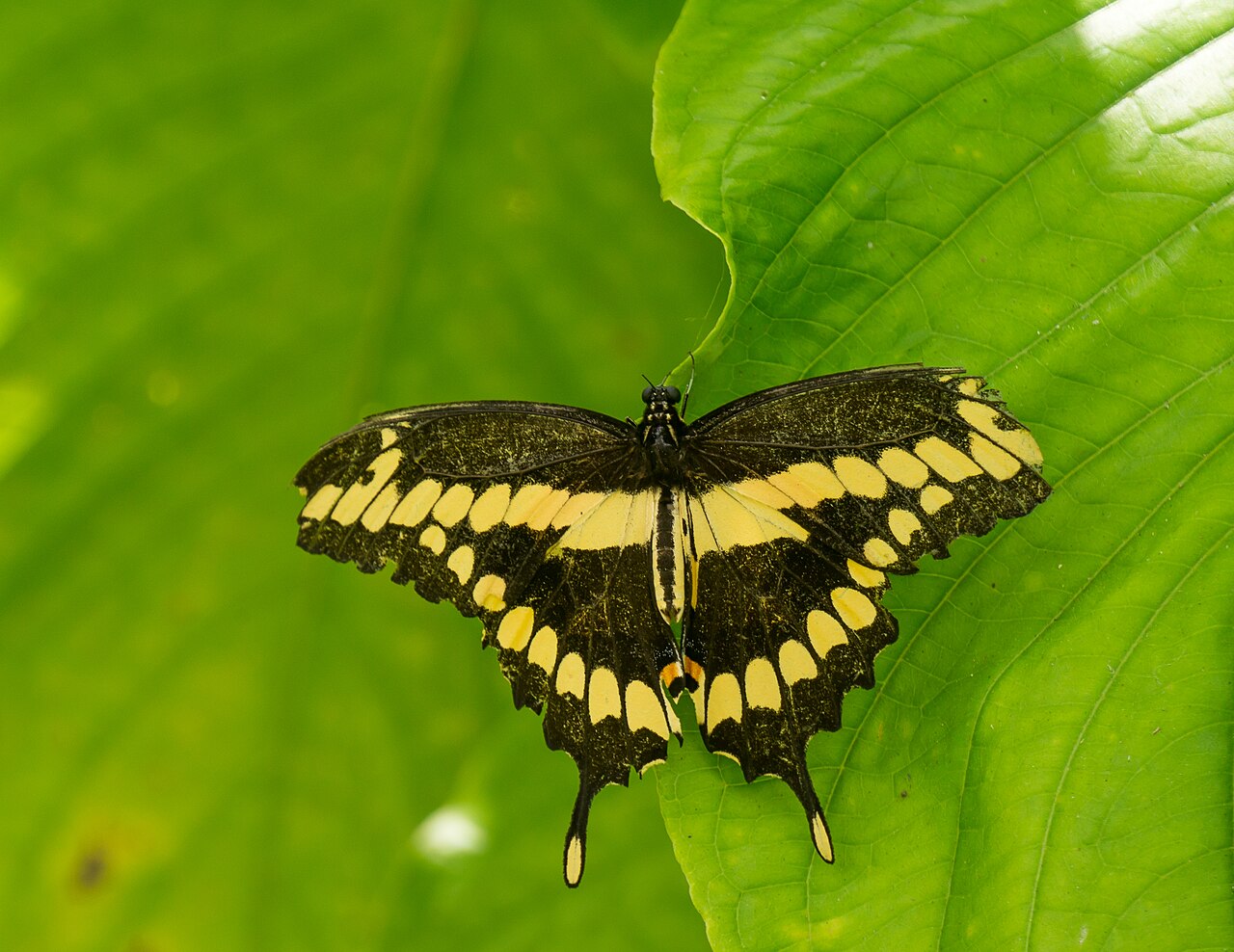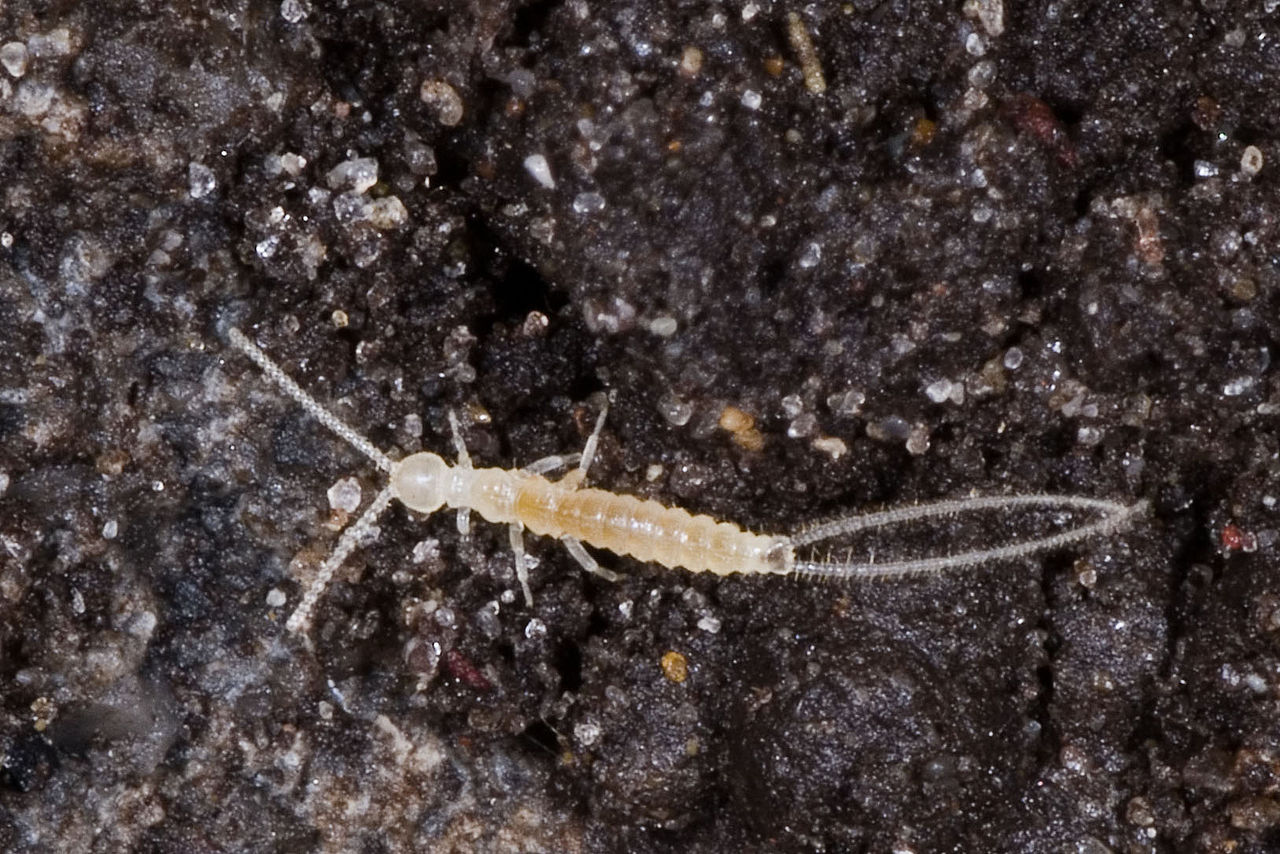Some of the most common bugs in the world have tails. Bugs with long tails tend to stand out even more.
Tails can be cerci or pincers. Ovipositors can also be taken as tails in some species such as crickets.
The length of these tails is sometimes comparable to the length of the body itself. Some bugs even have longer tails.
Tails can have a different structure on bugs. Cerci-like tails are specific to species such as earwigs. Antennae-like tails are seen on bugs such as silverfish.
The following species of bugs have tails. Some of them are only specific to males or their sub-species.
1. Mayflies – Flying Insect With Long Tails
Mayflies are some of the oldest types of insects with long tails in the world. Found across multiple continents including North America, this species is known for having 2 or even 3 long tails.

An elongated body with 3 pairs of legs is specific to this species. Long and almost fully transparent wings are further characteristic of mayflies.
The tails have a similar length to the body and they don’t fold over the body.
Its wings don’t fold over the body either. This is a sign of a primitive insect.
Mayflies are also known for being the only species of insects with 2 sets of genitalia, both in the case of males and females.
2. Silverfish

Silverfish are found in moist areas all around the world. They are among the insects with long tails found in homes.
High humidity areas such as bathrooms attract these insects with the condition of being dark as these insects avoid light.
Their name comes from their lateral fish-like movements.
Based on an elongated body, silverfish can move quickly, mainly with a side-to-side pattern.
Silverfish also have 3 long tails which are used in different events, such as mating.
The male backs into the female and vibrates these tails before mating.
Silverfish are found all around old homes if they can find spaces to crawl through indoors.
They are known for eating cellulose with an appetite for old books.
3. Ichneumon Wasps – Wasps With Long Tails

These types of wasps are some of the most common parasitic wasps with long ovipositors.
Only the females have long ovipositors which can be confused with long tails.
The female has a red-brown color while the male has a yellow and black color.
The ovipositor that looks like a tail is mostly black.
Some morphs of the species show a yellow female or even a red and black female. Both morphs have long black ovipositors.
They are used to lay eggs directly on or in a host such as the caterpillar of a snout moth.
Some venom can also be injected through the ovipositor, together with the eggs. This helps paralyze the host of the eggs.
4. Moths

Moths are often known for having long tails. These can be short or long, depending on the species.
Some rare types of moths have tails a few times longer than their bodies.
Long-Tailed Burnet Moths (Lepidoptera Himantopteridae) is one of the moths with exceptionally-long tails.
These moths have gray-transparent wings and charcoal tails.
The species grows to a size of up to 42mm with tails of at least a similar length.
Long-Tailed Burnet Moths are a common sight across tropical climates in Africa.
The species is found in tropical forests on host trees such as Shorea.
5. Butterflies

Some species of butterflies found in North America and around the world also have tails.
The group of butterflies under the swallowtail category is known for its long tails.
Giant Swallowtail (Papilio cresphontes) butterflies are known to have 2 tails connected to the lower part of the hindwings.
This species has contrasting yellow and black coloring which is also visible across these tails.
Mostly black, the tails also have yellow sections, similar to the color on the wings of the species.
Palamedes Swallowtail (Papilio Palamedes) butterflies are also known for having similar long tails.
These butterflies are also black and yellow with similarly-colored tails connected to the lower part of the hindwings.
6. Katydids – Green Bugs With Long Tails

Katydids or bush crickets are some of the most common green bugs in North America. There are a few species that show very long tails among these katydids.
Straight-lanced Meadow Katydid (Conocephalus strictus) is a common species in Northeastern US territories.
It’s the females of the species that have long ovipositors, perceived as long tails. These ovipositors are so long they exceed the length of the Straight-lanced Meadow Katydid.
Feeding on grasses, the female has very good flexibility in the ovipositor.
The ovipositor measures around 30mm while the female can grow to a maximum size of 22mm.
Katydids of this genus are found in open areas with plenty of grasses. They are most common on roadsides.

Short-winged Meadow Katydid (Conocephalus brevipennis) is another species common in open areas with grasses.
This North American species has a long ovipositor sometimes believed to be a tail. The brown color is seen on the dorsal side of this katydid.
A similar nuance brown color is also specific to the ovipositor of the species.
You can see this type of katydid with long tails in the Eastern part of North America.
7. Earwigs

The Common Earwig (Forficula auricularia) is one of the species with long pincers which can be seen as tails.
These pincers have multiple purposes.
Holding small prey and plants is among the most important roles of pincers on earwigs.
Some earwigs rely on their pincers to defend themselves from other bugs and wasps.
These pincers are seen both in males and females.
Earwigs have a dark brown color with light brown or dark brown pincers. There’s a difference in how these pincers look among the sexes of the species.
Males have curved pincers with tips pointing to each other.
Females have straight pincers with the tips pointing outwards.
Earwigs are nocturnal insects with a detrimental role in the garden. They can consume plants and be one of the species which come with defoliation.
Earwigs are mostly known as scavengers are they eat plant fiber.
However, earwigs can sometimes be seen as beneficial as they can eat small insects.
Active at night, earwigs are most likely to consume other insects that are small and nocturnal.
Spiders and spider eggs are frequently consumed by earwigs. Small aphids are also a common target for earwigs.
8. Crickets

Crickets are some of the most common bugs with tails. These bugs have cerci tails and female crickets are known for a third tail or ovipositor.
The main difference between the female and the male cricket is the additional tubular ovipositor connected to the rear of the abdomen.
Females use their strong ovipositors to pierce and lay eggs directly in plants.
The ovipositor can also be used to lay eggs in the ground.
Crickets have a very varied diet and habitat. Found on all continents, crickets can be entire herbivorous.
They can also be categorized as scavengers as they can eat all types of decaying plant matter.
Crickets are also known for eating a wider range of foods which includes insects and insect eggs.
They can be seen collecting and eating the eggs of very small insects such as aphids.
9. Two-pronged Bristletails

Two-pronged Bristletails have long filaments known as tails. They can also have pincers which make for a common Two-pronged Bristletails-earwigs confusion.
There are different types of Two-pronged Bristletails.
Japygids are a type of bristletail with long pincers. These pincers are similar to those on earwigs and are characteristic of a species of Two-pronged Bristletails that are predators.
Pincers on this sub-species are used to hold small prey.
Campodeidae-family hexapods are small bugs with long tails.
These bugs grow to a maximum size of 12mm. Multi-segment cerci similar to antennae represent their tails.
These are some of the most secretive types of bugs as they spend much of their time underground.
Bugs of this genus love soil humidity and can be found in the ground or moving through the leaf litter.
Summary
Bugs can have no tails or medium-sized tails. Some bugs have long tails that can be as long or even longer than the bugs themselves.
These tails are often associated with different tasks, such as grabbing or ripping prey as is the case with pincers.
Long tails can also be used for mating. Some bugs can vibrate tails just before mating.
Receptors in tails are also useful for bugs to detect moisture or temperature changes. Just as receptors in antennae, the receptors in tails can be just as important for picking up odors.
Tails are believed to be reminiscent of the first species of bugs that used them for survival.
Some species of moths and butterflies use tails for navigation or to deter potential predators to bite non-essential areas of the wings first. Today, tails are rarely singular (except ovipositors that resemble tails) as they are seen in pairs on bugs, similarly to pairs of antennae.